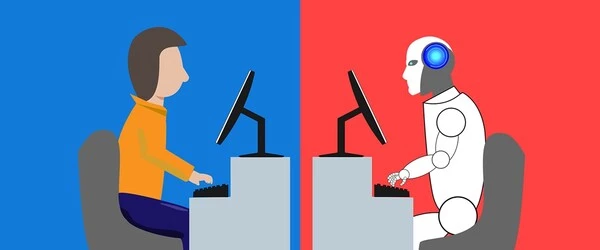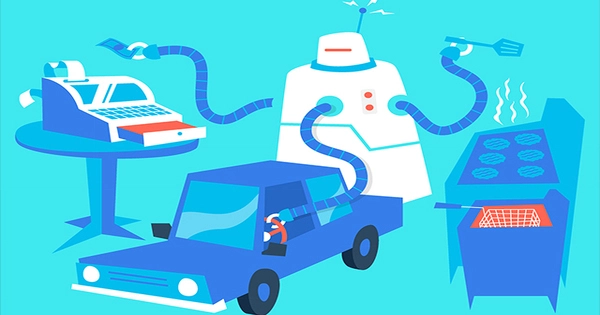While it is true that automation and robots are affecting the job market, the rate of job loss due to automation is often overestimated. While some jobs may be automated, new jobs are also being created in industries such as technology, healthcare, and advanced manufacturing. Additionally, the impact of automation varies depending on the sector and the country, with some industries and regions being more affected than others.
There’s no need to be concerned about a robot takeover just yet. Only 14% of employees say a robot has taken their job. Those who have experienced job displacement as a result of a robot, on the other hand, overestimate the impact of robots taking jobs from humans by about three times.
It’s easy to believe that robots are stealing jobs from humans and causing major disruptions in the labor market; after all, you’ve probably heard that chatbots make better customer service representatives and that computer programs track and move packages without the use of human hands. But there’s no need to worry about a robot takeover just yet, according to a new study by BYU sociology professor Eric Dahlin. Dahlin’s research found that robots aren’t replacing humans at the rate most people think, but people are prone to severely exaggerate the rate of robot takeover.
Overall, our perceptions of robots taking over is greatly exaggerated. Those who hadn’t lost jobs overestimated by about double, and those who had lost jobs overestimated by about three times.
Eric Dahlin
According to the study, which was recently published in Socius: Sociological Research for a Dynamic World, only 14% of workers have had their job replaced by a robot. Those who have experienced job displacement as a result of a robot, on the other hand, overestimate the impact of robots taking jobs from humans by about three times.
Dahlin surveyed nearly 2,000 people about their perceptions of jobs being replaced by robots in order to better understand the relationship between job loss and robots. The first question asked respondents to estimate the percentage of employees whose employers had replaced jobs with robots. They were then asked if their employer had ever used a robot to do their job.
Those who had been replaced by a robot (about 14%), estimated that 47% of all jobs have been taken over by robots. Similarly, those who hadn’t experienced job replacement still estimated that 29% of jobs have been supplanted by robots.

“Overall, our perceptions of robots taking over is greatly exaggerated,” said Dahlin. “Those who hadn’t lost jobs overestimated by about double, and those who had lost jobs overestimated by about three times.”
According to Dahlin, headlines predicting a dire future of employment have likely exaggerated the threat of robots taking over jobs. Humans’ fear of being replaced by automated work processes dates back to the early 1800s.
“We expect novel technologies to be adopted without taking into account all relevant contextual impediments such as cultural, economic, and government arrangements that support the technology’s manufacturing, sale, and use,” he said. “However, just because a technology can be used for something does not mean it will be used.”
Dahlin says these findings are consistent with previous studies, which suggest that robots aren’t displacing workers. Rather, workplaces are integrating both employees and robots in ways that generate more value for human labor.
“An everyday example would be an autonomous, self-propelled machine roaming the aisles and cleaning the floors at your local grocery store,” Dahlin says. “This robot cleans the floors while employees clean under shelves and other hard-to-reach areas.”
According to Dahlin, another good example of robots and humans collaborating is the aviation industry. Airplane manufacturers painted airplane wings with robots. A robot can apply one coat of paint in 24 minutes, which a human painter would take hours to complete. While the robot paints, humans load and unload the paint.














